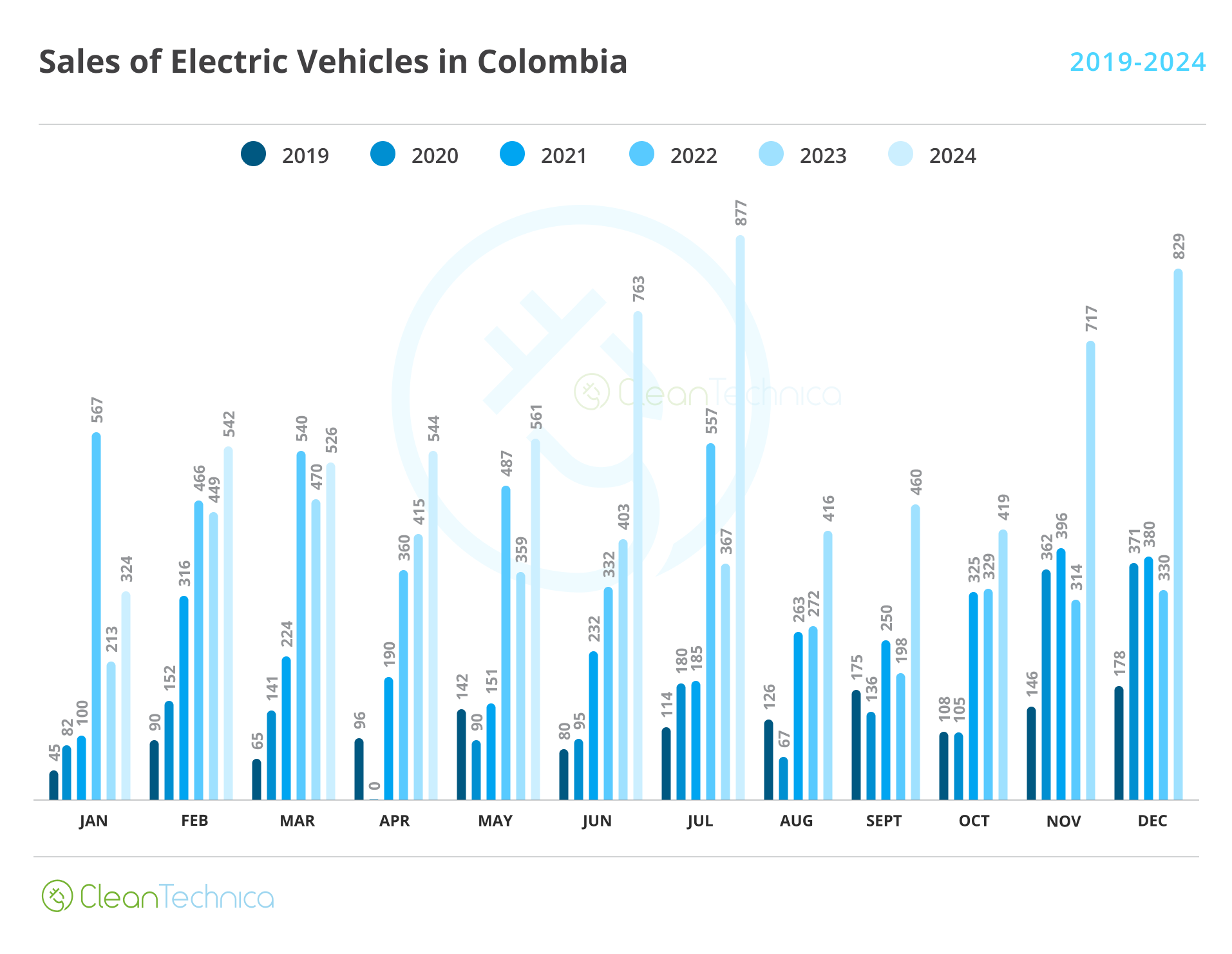Sign up for daily news updates from CleanTechnica on email. Or follow us on Google News!
I live in Florida, where the insurance premiums for the collection of condominiums I call home have doubled and then tripled within a few short years, thanks to more frequent and more powerful storms attributed to burning fossil fuels. I have been telling people for years that, in the final analysis, insurance companies will determine where we can and cannot live.
The insurance industry is quite simple. It needs to take in more money than it pays out. Lately, it has been the other way around as multiple hurricanes and forest fires have led to massive losses. Many of those losses are the result of flooding. Warmer air holds more moisture, which leads to heavier rains. The fossil fuels we use to power our world are responsible for much of the rise in ambient temperatures that lead to more moisture in the air.
Montpelier, Vermont, experienced nine inches of rain in one 48-hour period last year, which flooded the downtown area and caused massive damage to buildings, roads, and bridges. “I think most people in this area were very concerned about climate change, but we also pretty much thought we were a little safer here because we had not really suffered the drastic events that some other parts of the country have,” Rob Kasow, co-owner of Bear Pond Books, told the Associated Press. “But I think now we’ve been a little disabused of the notion that Vermont is safe from climate change.”
Bill McKibben had a similar epiphany when flooding overwhelmed his small community in Vermont after a hurricane turned inward and swept across the state on its way on up to Canada. Prior to that event, he and his neighbors tuttutted about hurricanes in Florida but never imagined they could cause such destruction in their home state. Now they know better. They also know that fossil fuels are largely responsible for the increase in the frequency and intensity of such storms.
In his latest blog post on Substack, McKibben wrote that the Vermont legislature is working on a new idea that would require companies that produce and distribute fossil fuels to pay for the environmental damage they have caused. (In the same post, he talks about an idea promoted by David Arkush and Aaron Regunberg to make them criminally liable for their actions.)
Vermont wants to create a ”climate superfund” law that treats disasters like last year’s summer flooding as if they were a toxic dump whose cleanup can be charged to the corporation that caused them. That would have been hard even a few years ago, but “climate attribution” science is now robust. It’s increasingly easy to prove that absent global warming we wouldn’t have the endless downpours/droughts/fires. If a chemical company pollutes a site, the superfund law has been a way to make it pay for the remediation. So if Vermont’s flooding cost its taxpayers $2.5 billion to repair, why should they be on the hook?
New York is also close to passing such a law, and perhaps Maryland and Massachusetts, as Katie Meyers pointed out in Grist recently. They are all states without significant hydrocarbon production but with a lot of climate damage.
Paul Burns, head of the Vermont Public Research Interest Group, and Lauren Hierl, a member of the selectboard in Montpelier, explained the logic behind the legislation this way. “The biggest oil companies in the world made more than $200 billion in profits last year, while Vermonters were forced to pay record prices at the pump — and got stuck with the costs of climate change cleanup in our communities. That shouldn’t be the case. Big Oil knowingly made a mess of the climate. They should help pay to clean it up. It’s a lesson we all learned in kindergarten: If you make a mess, you clean it up.”
State Senator Dick Sears, who chairs the Senate Judiciary Committee, said he would have “absolutely opposed” such a bill 20 years ago. Chemical contamination in the Bennington area, which has permanently altered the lives of some of his constituents, changed his mind. “Who’s going to pay for the damage done?” Sears said. “Is it going to be the taxpayer? Is it going to be the homeowner or the small business? Or is it going to be the company that contributed to the problem? I say it should be the company that contributed to the problem.”
Fossil Fuels And Climate Risk
A new report by Realtor.com says nearly half of all homes in the US — 44.8 percent to be precise — are at risk of severe or extreme damage from environmental threats. Almost $22 trillion in residential real estate is in danger of flooding, wind damage, wildfires, heat, or hazardous air quality. “Climate risk is a big deal,” says Realtor.com economist Jiayi Xu. “It can impact home values, insurance costs, and the overall stability of a housing market. The issues are whether you can get access to affordable insurance and how much the costs will increase.”
These natural disasters can destroy homes and communities. Even properties that aren’t directly affected by climate risks are being affected by higher insurance premiums. Those higher premiums put a damper on future sales by making home ownership more expensive.
To figure out the metropolitan areas facing the highest risks and the value of their real estate, the Realtor.com economics team overlaid heat, wildfire, flood, wind, and air quality data from First Street Foundation over Realtor.com single family, condo, co-op, town house, and row house property data. Then the team matched the homes to property value estimates. Only homes in the 100 largest metros were ranked. Homes deemed to be at severe and extreme risk for any of the environmental threats are those that received a score of 7 or higher from First Street. (Honolulu was not included in the analysis due to a lack of climate data.)
The Western part of the country was most vulnerable to the deadly blazes, which have devastated entire communities. Nationwide, 5.5 percent of homes, worth a combined $3 trillion, face a severe or extreme risk from wildfires. They have more than a 14 percent chance of being involved in a wildfire over the next 30 years.
Such startling statistics have resulted in more insurers pulling out of fire-prone states like California, where about 39 percent of these vulnerable properties are located. This has left homeowners scrambling to find other affordable options but mortgage lenders require borrowers to carry fire insurance, which can substantially increase the cost of home ownership in those areas. The insurer of last resort, California’s FAIR Plan, is often more expensive than standard homeowners or fire insurance. Colorado Springs, where about three-quarters of homes in the metro were at severe or extreme risk of wildfires over the next 30 years, was deemed the most vulnerable. That adds up to about $89.9 billion in real estate lying in harm’s way.
Flood Damage Threatens Trillions In Losses
6.6 percent of homes in the US worth an estimated $3.4 trillion face a high risk of flooding attributed to warmer average temperatures associated with extracting and burning fossil fuels. The research shows that prices are lower for homes in areas where the threat of flooding is high than they are for homes than are in safer areas. Buyers who purchase homes where flooding is a problem also face high annual insurance premiums. Those insured by the National Flood Insurance Program could see their annual premiums double by the end of the decade, the Realtor.com research suggests.
New Orleans, which was devastated by Hurricane Katrina in 2015, has the largest percentage of vulnerable homes. 76 percent of its homes worth an estimated $78.3 billion are in severe or extreme danger of flooding, according to the Realtor.com analysis. Cape Coral, Florida is next with 39 percent of homes at risk. North Port, Florida is at 20.2 percent, Honolulu is at 19.5 percent, and Tampa, Florida is at 19.5 percent
“Buyers are willfully ignorant,” says Jesse Keenan, a sustainable real estate professor at Tulane University in New Orleans. “You have to push it out of your mind in New Orleans that during hurricane season … you could very easily be wiped off the map. Buyers are having a hard time finding insurance and then finding insurance they can afford,” he says. “For everybody else, they just go uninsured.”
Wind Damage Threatens Storm Prone Areas
The homes with the highest flood risk from storms have an elevated risk of wind damage. Almost a fifth of homes — 18 percent — are at risk of severe or extreme damage from hurricane winds of at least 51 mph over the next 30 years. That amounts to nearly $7.7 trillion worth of real estate.
Many homeowners in 19 states and Washington, DC are required to carry additional hurricane related policies. This makes home ownership even more expensive for buyers, especially those who finance their homes with traditional mortgages where extra insurance is often required because water that gets into a home through a damaged roof or is propelled by wind is typically not covered by flood insurance. Yes, that’s right. If you have flood insurance, it doesn’t cover you if the flood comes from above rather than below. Such are the vagaries and vicissitudes of the insurance industry.
Wind damage is particularly high in many large metropolitan areas in the South, especially coastal cities in Florida. Every home is at a severe or extreme risk of wind damage in Houston, Miami, Tampa, Orlando, Jacksonville, New Orleans; North Port, Cape Coral, Baton Rouge, Charleston, Deltona, Palm Bay, Lakeland, Myrtle Beach, and McAllen, Texas.
The Takeaway
Cary Bernstein is an architect in San Francisco, who makes sustainability a prominent component of her designs. She said in an email, “The social, economic, and environmental costs of natural disasters is staggering. The cycles of waste, reconstruction, waste, reconstruction need to stop. Any sound environmental policy needs to take this into account. Responsible and resilient building and development needs to be mindful of these analyses.
“More buildings are damaged (and lives lost) by flood than any other disaster type due to historic development patterns along coastlines and waterways. Ethical considerations for managed retreat, smaller building and lifestyle footprints, and reductions in individual consumption are paramount for realistic solutions because habitable resources will shrink.”
She’s right. And Jesse Keenan at Tulane is right when he says real estate buyers are “willfully ignorant.” So are most urban planners and politicians. Upton Sinclair put it succinctly when he said, “It is difficult to get people to understand something when their salary depends on them not understanding it.”
Fossil fuels are responsible for much of our electrical energy. They keep us warm and cool. They allow us to fly half way around the world in a day and drive our private automobiles wherever and whenever we choose. So in a sense they are equivalent to our salary because much of the money we earn goes to pay for them and the benefits they confer. That makes it difficult for us to appreciate that those same elements of “the good life” are also causing dramatic changes to our environment that threaten our existence.
OK, we get it. People don’t want to hear about fossil fuels and the destruction they cause because it makes them uncomfortable. We are all programmed to step out of the way of a speeding truck careening towards us a block away but are blithely unconcerned about the same truck when it is ten miles distant, even though the danger may be the same.
We put together the articles you read on CleanTechnica every day in hopes that we may, in some small way, change a few minds and those people will change a few minds, and so forth. By now, it is well known that the levelized cost of electricity is lower for renewables than it is for thermal generation (and much lower than it is for nuclear power), and yet we continue building coal and methane fired generating stations and nuclear power plants because that is what we have always done.
The fossil fuels companies are pouring millions upon millions of dollars into efforts to convince us there is no climate emergency even though we can see it happening right outside our windows. We need to make sustainability the primary focus of our lives from today forward. Doing so is not easy. As John F. Kennedy told us, “We choose to do these things not because they are easy but because they are hard.” Saving our planet will be hard but it has to be done if there is to be a future for humanity, so we might as well get on with it — starting now. Be sure to tell your friends!
Have a tip for CleanTechnica? Want to advertise? Want to suggest a guest for our CleanTech Talk podcast? Contact us here.
Latest CleanTechnica TV Video
CleanTechnica uses affiliate links. See our policy here.





